Hello lovely Hiveans !

From Bud to Blossom
During the last months most of us were forced to stay at home due to SARS-CoV-2 and thus we missed nearly the whole season of spring. It is such a pity, as this season offers us so much beauty with all the blossom that is starting, with all the animals that start to crawl over the earth again, and with much more of the beauty of mother natures initialization of the yearly life circle of earth. It is also such a pity, as I planed to take countless pictures from the botanical gardens to create a documentation of the whole circles of the beautiful blooming of flowers. Luckily spring will come again, the botanical garden will be still there, and there will be also another spring coming next year. But luckily I found a nice first motive to test my documentary skills on, namely the Rhododendron.
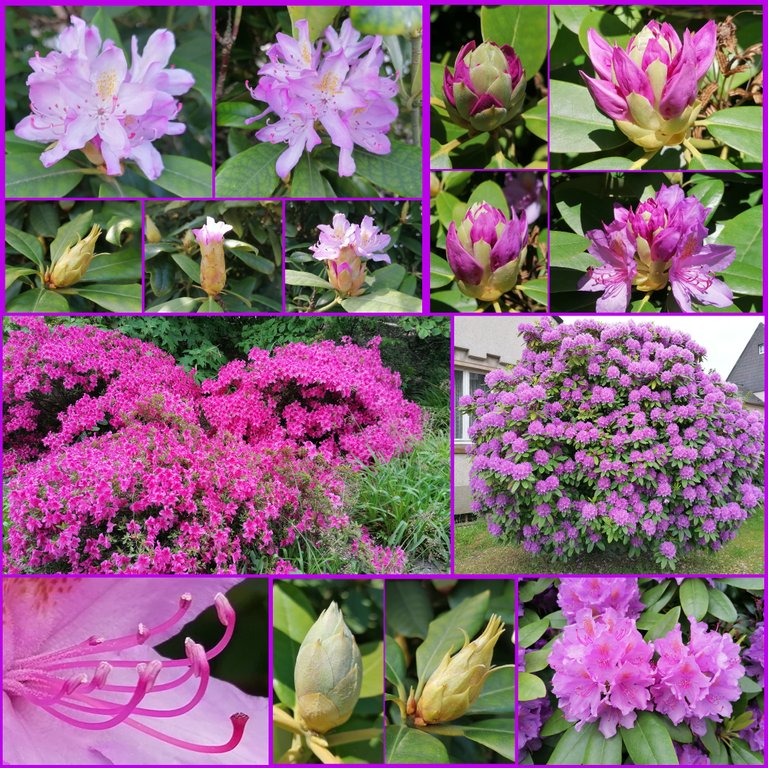
The Genus of Rhododendron
The name Rhododendron derives, as so many plants names, from the ancient Greek language. Thereby "rhódon" translates to "rose" and "déndron" translates to "tree". So its name is actually the "Rose Tree". I really like that name and if you look on the pictures you can see why they called it like that back in the days. The genus of Rhododendron feature more than 1000 different species species of woody plants in the family of the Ericaceae. Thus, there can be also found a variety of petal colors. Those range from white to a deep purple one, as you can also see in the pictures. Nowadays this tree can be found everywhere in the world and is one of the most used ornamental plants in gardens and parks. It even is so popular that it is the state flower of Washington and West Virginia in the United States, as well as the state tree of Sikkim and Uttarakhand in India.
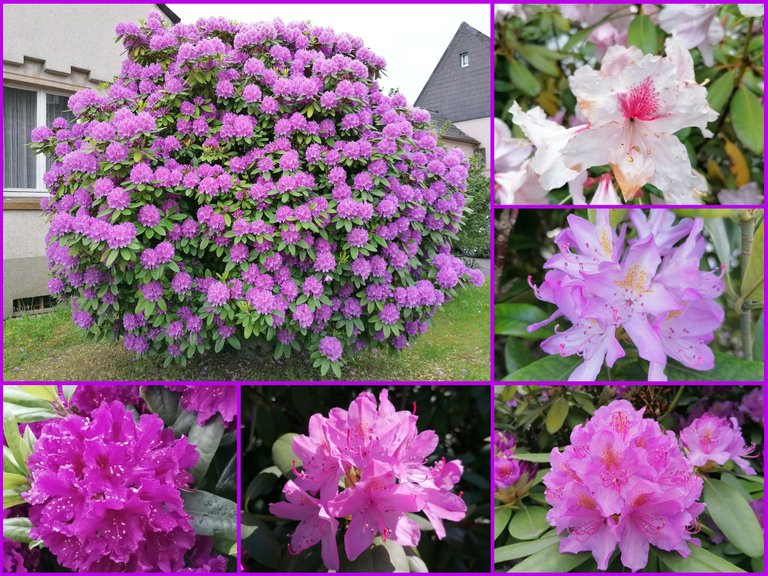
The Huge Variety of the Genus
As there are so many different species of the Genus of Rhododendron out there, they is also a huge difference in their appearance. I already talked about the different petal colors, but they also differ in size, leave form, flower amount and petal density. Thereby the smallest Rhododendrons with a size between 10 to 100 cm are counted as a bushes, while the largest ones with sizes of more than 30 meters are already large trees. It was also found, that also most Rhododendron are evergreen, some are only deciduous. But they all prefer moist and well-drained soil, semi-shady locations and usually bloom from May to June, so right now, hehe. As my photographs are restricted to the area where I am living at, I was not able to detect many different species, but what I found, is that there are two distinctive kind of buds and thus also different ways of opening. On the next pictures you can see the two sorts of buds that I found so far.

Opening of the Buds
When I first found those different bud forms, I was quite exited how they may be opening. The left one, by far the most common bud form of the Rhododendron in my area, and showed those beautiful little purple buds already right after opening for a tiny tiny bit and I already imagined how beautiful this could evolve. Unfortunately the right bud opened super fast and revealed a dried out core. At first I was quite sad about it, as I wanted to show the one and same buds for the complete opening process, but then I decided to take another one for showing the beauty of the process to you. I call them the "Spiky Pink" buds.

Bud Version "Spiky Pink"
This version did not open from the sides, but showed his petals coming out from the top at first. They were bright pink colored. In the next step, after already the majority of the petals were expressed, the sides started to open too. What I was a bit confused about is, that also this is by far the dominating color of the Rhododendron flowers here, it is not the dominating bud type. I actually assume that, no matter which bud type is there in the first place, all colors can be gained. Not a bad guess I assume as there are more than 1000 species of the Rhododendron out there.
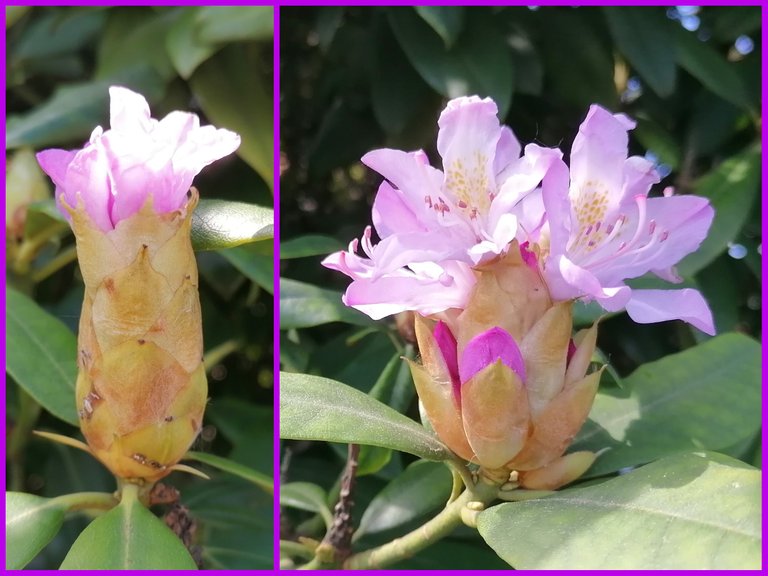
The final flower was actually featuring relatively less amount of petals on the flower. They are also longer and thinner compares to the other Bud Version that I will present to you after this one here.
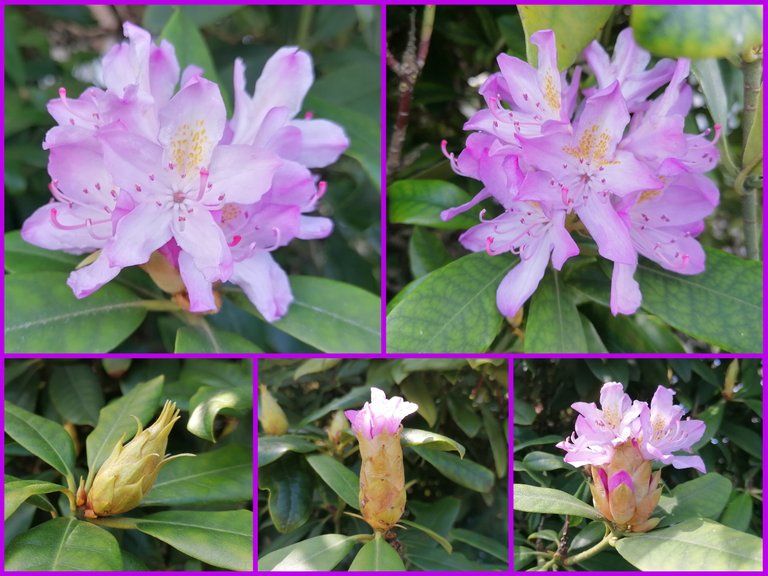
Bud Version "Purple Ball"
Contrary to the "Spiky Pink" buds, the "Purple Ball" buds were opening from the sides first and opened from the top at the very end. I found it quite interesting that both types are using different approaches here. You can even see in the picture that also the bottom petals are already completely opened, the top is still partly closed at that point.

In addition, as already mentioned, the petals are broader and shorter compared to the other bud version. For me I assume that it is viable to state, that the initial form of the bud is a representation of the later form of the revealed petals. I would also extend it to the thickness of the buds. The thicker they are, the bigger will be the final blossoming flower in the end.
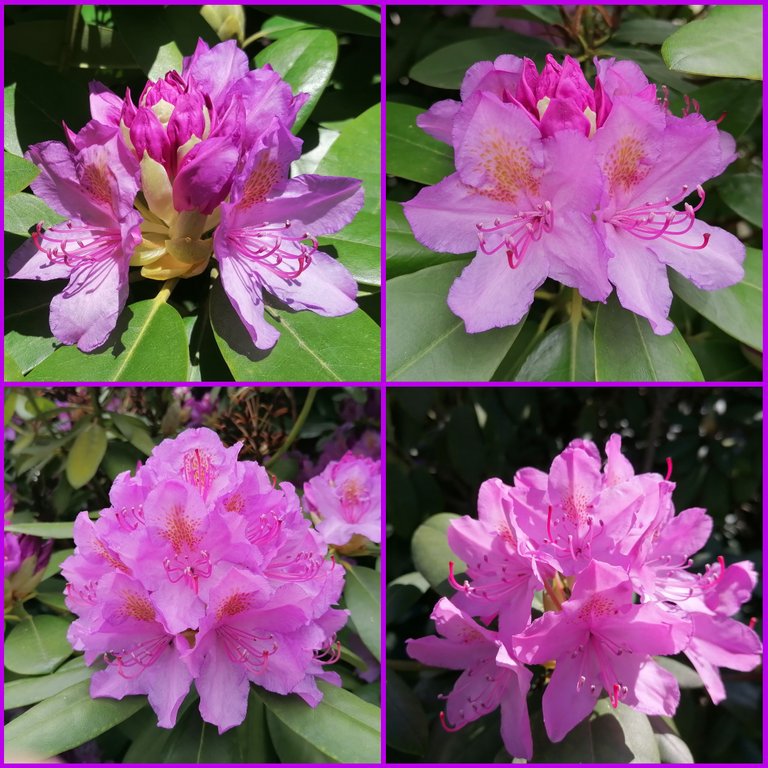
Some Similarities
But there are also some similarities, which I found to be the same, not matter which blossom I looked at, namely the petal arrangements, the characteristic markings and the look of the pistil and stamen. The petals are always found in groups of 5 and they are predominantly radial-symmetric to weakly cygomorphic. On each set of these five-numbered clusters there is always one petal which is bearing some characteristic markings. The difference between stamen and pistil is that the stamen is the male reproductive organ of a flower whereas the pistil is the female reproductive organ. These are looking exactly the same on each flower, but I want to name one specialty of the Rhododendron. Normally stamens and pistil occur together in each Rhododendron flower, as they do in the majority of flowering plants. So its a viable thought to think that each time you are looking at a Rhododendron you are catching him directly in the middle of the act, hehe. But there are actually a few Rhododendron that only posses one of those reproductive organs and prefer the "cross-mating".
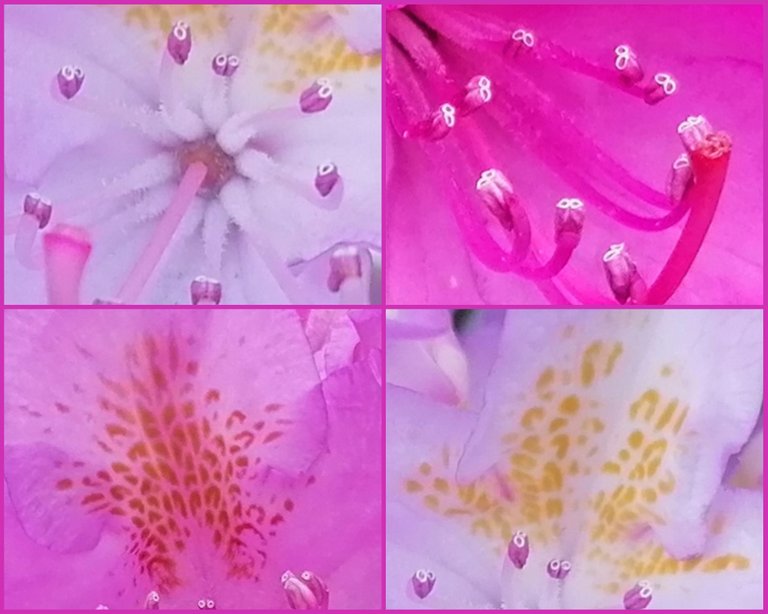
Is the Azalea a Rhododendron?
Yes they are ! Azaleas are flowering shrubs in the genus Rhododendron too. I found this very beautiful Azalea shrub here in the middle of his blooming period. If you look closer you will find all the features that I described earlier here too, this includes the five-numbered petal clusters, the characteristic markings, as well as the stamen and pistils. There are a few differences to mention, as the inflorescence's are located very close together, the leafs are far smaller, as the whole bushes are. Overall the Azalea are growing in very small bushes compared to the big ones shown before, but the inflorescen density is so beautiful to watch. The genus of Rhododendron for sure is a very big one.
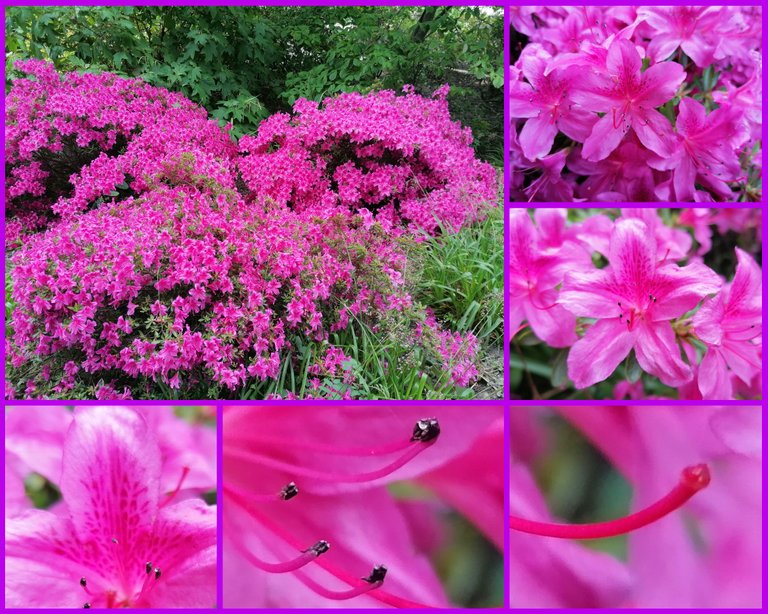
Thank You Very Much !!!
I would like to thank everyone who actually was reading to this point here. I really hope that you enjoyed this little post about the Rhododendron genus. Of course I would like to read as many critics about the structure, picture presentation , as well as information providing from you to increase the quality of any future posts
All pictures were taken by myself, ©@adalger, with a Huawei P30 Mobile Phone. For information gathering I used articles on Wikipedia



If you want to know more about me, just look up my Introduceyourself post or follow my blog ^^
Learn more about @adalger here !

Best wishes,
Adalger
Those flowers look amazing - they have really nice and vibrant colors :)
Hehe, yes they have and while in bloom its like a bis bush full of flowers. I really would like to see a big tree of these once, must be a beautiful sight ^^
Sounds like a great idea :)
Wonderful pictures and info on a magnificent flowering plant. 😊
Thank you @manorvillemike ^^ Rhododendron are real beauties and luckily they are to be found just everywhere nowadays, hehe ;)
Very informative reading and inrteresting observation.
I have two azaleas and I did not know before that they are same like Rhododendron. But I keep them away from the cat, becase they are toxic.
Oh yes, cats like to eat plants from time to time. My cats also already tried to take bites on my plants 😉 .. As far as I read it nearly all Rhododendron species are poisonous.. And many other are too for cats 🤔
Gorgeous images! @adalgar🌺🌸🌺
I understand your disappointment about missing out on botanical gardens being closed due to Covid-19. The one I enjoy visiting near me -- the Missouri Botanical Gardens -- reopens June 16 with new restrictions & guidelines in place.
Rhododendrons and the related azaleas are my two favorite Spring flowering bushes because of their vibrantly colored blooms in a variety of pink, fuchsia, red and purple shades. They are aesthetically and visually pleasing paired with the complimentary yellow forsythia flowers.
Excellent post!
Be well and stay safe!💕
Thank you very much for the kind words ^^ .. as far as I know, especially the Azalea, are one of the most used ornamental bushes that are used in the whole world. No wonder, so beautiful as they are ;) .. It is just a little bit of a pity that their blooming time is so short.